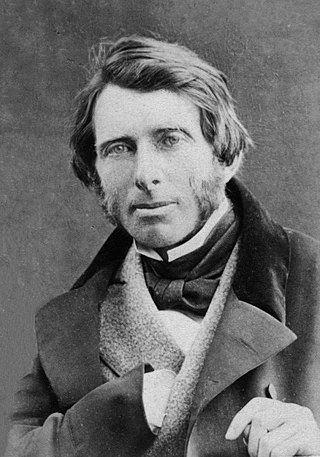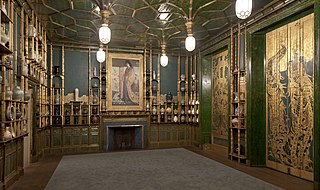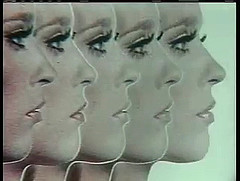Art and morality have been discussed, compared and linked for as long as they have been identified as concepts.
Art and morality have been discussed, compared and linked for as long as they have been identified as concepts.
In the Republic , [1] Plato saw the function of the actor as bogus, presenting a dangerous illusion of reality, and masking the truth of existence by the pretence of acting. Aristotle, in The Poetics , [2] saw the role of the actor somewhat differently, suggesting that by witnessing pity and fear (in his view the essence of tragedy) on stage, an audience could experience a catharsis of the emotions associated with real tragic events, without having to experience them as first-hand participants.
Since then, the 'stand-off' between those who have seen art as having a direct impact on morality, and those who have asserted its independence, has persisted. Tolstoy was ambivalent about the role of the artist (despite being one himself). In What is Art? he castigated now-canonical artists such as Shakespeare, Goethe and Wagner for failing to express the 'simple truths' about morality (as he saw them), opting instead to show off their poetic cleverness. He saw their work as morally reprehensible, effectively a wasting of their talents through their failure to communicate moral truth to the masses.
Since the late nineteenth century and beyond, with the development of 'the arts' as a cultural concept, the debate about art and morality has intensified, with the ever more challenging activities of artists becoming targets for those who see art as an influence for bad or good, and it has been a mainstay of many art critics' negative reviews. John Ruskin accused Whistler of "flinging a pot of paint in the face of the audience", [3] and several of the ballets of Diaghilev scandalised audiences with their explicit (at the time) sexual themes.
Whistler and Ruskin eventually went face-to-face in the courtroom. But in 1961, one of the most famous legal clashes between art and morality occurred when Penguin Books were taken to court over their publication of D. H. Lawrence's novel Lady Chatterley's Lover . [4] Similarly, in 1977 the Christian morality campaigner Mary Whitehouse successfully sued a magazine, Gay News , under blasphemous libel laws. [5]
In popular culture, pornography (if seen in aesthetic terms) is used as an example of the objectification of women, and violent films have been cited as the influence for so-called copycat acts in reality. An example of this was the Hungerford Massacre, where a gunman was alleged by the tabloid press to have been influenced by the Rambo series of films starring Sylvester Stallone.
In September 2001, shortly after the World Trade Center Attack, the German composer Karlheinz Stockhausen said of the atrocity that it was "Lucifer's greatest work of art." [6] [7] (However, Stockhausen's comments were taken out of context and misunderstood.) The responses were immediate and extreme, fuelled once again by the tabloid press. Some have found, here and elsewhere, art in the service of morality to be politically dangerous. [8]
In purely philosophical terms, the precise nature of art's links with morality have been long been questioned. Some have found no link between the aesthetic and the moral (i.e. being morally reprehensible does not deny an artwork its art status; it does not cease having aesthetic value no matter how depraved some might see it being), whereas others, who have not gone down the explicitly Platonist route, have argued that the relationship is one akin to supervenience. Here, it is argued that an essential component of the production of art, the human factor, can only be made sensible if taken along with the perceived moral codes which govern humanity.

A genre of arts criticism, literary criticism or literary studies is the study, evaluation, and interpretation of literature. Modern literary criticism is often influenced by literary theory, which is the philosophical analysis of literature's goals and methods. Although the two activities are closely related, literary critics are not always, and have not always been, theorists.

John Ruskin was an English writer, philosopher, art historian, art critic and polymath of the Victorian era. He wrote on subjects as varied as geology, architecture, myth, ornithology, literature, education, botany and political economy.

Classicism, in the arts, refers generally to a high regard for a classical period, classical antiquity in the Western tradition, as setting standards for taste which the classicists seek to emulate. In its purest form, classicism is an aesthetic attitude dependent on principles based in the culture, art and literature of ancient Greece and Rome, with the emphasis on form, simplicity, proportion, clarity of structure, perfection, restrained emotion, as well as explicit appeal to the intellect. The art of classicism typically seeks to be formal and restrained: of the Discobolus Sir Kenneth Clark observed, "if we object to his restraint and compression we are simply objecting to the classicism of classic art. A violent emphasis or a sudden acceleration of rhythmic movement would have destroyed those qualities of balance and completeness through which it retained until the present century its position of authority in the restricted repertoire of visual images." Classicism, as Clark noted, implies a canon of widely accepted ideal forms, whether in the Western canon that he was examining in The Nude (1956).

Aestheticism was an art movement in the late 19th century that valued the appearance of literature, music, fonts and the arts over their functions. According to Aestheticism, art and fonts should be produced to be beautiful, rather than to teach a lesson, create a parallel, or perform another didactic purpose, a sentiment best illustrated by the slogan "art for art's sake." Aestheticism flourished in the 1870s and 1880s, gaining prominence and the support of notable writers such as Walter Pater and Oscar Wilde.
Eudaimonia, sometimes anglicized as eudaemonia or eudemonia, is a Greek word literally translating to the state or condition of 'good spirit', and which is commonly translated as 'happiness' or 'welfare'.

Divine command theory is a meta-ethical theory which proposes that an action's status as morally good is equivalent to whether it is commanded by God. The theory asserts that what is moral is determined by God's commands and that for a person to be moral he is to follow God's commands. Followers of both monotheistic and polytheistic religions in ancient and modern times have often accepted the importance of God's commands in establishing morality.

Virtue ethics is an approach that treats virtue and character as the primary subjects of ethics, in contrast to other ethical systems that put consequences of voluntary acts, principles or rules of conduct, or obedience to divine authority in the primary role.
Mimesis is a term used in literary criticism and philosophy that carries a wide range of meanings, including imitatio, imitation, nonsensuous similarity, receptivity, representation, mimicry, the act of expression, the act of resembling, and the presentation of the self.
In most contexts, the concept of good denotes the conduct that should be preferred when posed with a choice between possible actions. Good is generally considered to be the opposite of evil and is of ethics, morality, philosophy, and religion. The specific meaning and etymology of the term and its associated translations among ancient and contemporary languages show substantial variation in its inflection and meaning, depending on circumstances of place and history, or of philosophical or religious context.
Aristotle's Poetics is the earliest surviving work of Greek dramatic theory and the first extant philosophical treatise to focus on literary theory. In this text Aristotle offers an account of ποιητική, which refers to poetry and more literally "the poetic art," deriving from the term for "poet; author; maker," ποιητής. Aristotle divides the art of poetry into verse drama, lyric poetry, and epic. The genres all share the function of mimesis, or imitation of life, but differ in three ways that Aristotle describes:

Moral character or character is an analysis of an individual's steady moral qualities. The concept of character can express a variety of attributes, including the presence or lack of virtues such as empathy, courage, fortitude, honesty, and loyalty, or of good behaviors or habits; these attributes are also a part of one's soft skills.
Art for art's sake—the usual English rendering of l'art pour l'art, a French slogan from the latter half of the 19th century—is a phrase that expresses the philosophy that 'true' art is utterly independent of any and all social values and utilitarian function, be that didactic, moral, or political. Such works are sometimes described as autotelic, a concept that has been expanded to embrace "inner-directed" or "self-motivated" human beings.

Jacopo Mazzoni was an Italian philosopher, a professor in Pisa, and friend of Galileo Galilei. His first name is sometimes reported as "Giacomo".

Aristotle's Rhetoric is an ancient Greek treatise on the art of persuasion, dating from the 4th century BCE. The English title varies: typically it is Rhetoric, the Art of Rhetoric, On Rhetoric, or a Treatise on Rhetoric.
This is a history of aesthetics.

Nocturne in Black and Gold – The Falling Rocket is a c. 1875 painting by James McNeill Whistler held in the Detroit Institute of Arts. The painting exemplified the Art for art's sake movement – a concept formulated by Pierre Jules Théophile Gautier and Charles Baudelaire.
Ethics is the branch of philosophy that examines right and wrong moral behavior, moral concepts and moral language. Ethics or moral philosophy is a branch of philosophy that "involves systematizing, defending, and recommending concepts of right and wrong behavior". The field of ethics, along with aesthetics, concerns matters of value, and thus comprises the branch of philosophy called axiology.

Victorian painting refers to the distinctive styles of painting in the United Kingdom during the reign of Queen Victoria (1837–1901). Victoria's early reign was characterised by rapid industrial development and social and political change, which made the United Kingdom one of the most powerful and advanced nations in the world. Painting in the early years of her reign was dominated by the Royal Academy of Arts and by the theories of its first president, Joshua Reynolds. Reynolds and the academy were strongly influenced by the Italian Renaissance painter Raphael, and believed that it was the role of an artist to make the subject of their work appear as noble and idealised as possible. This had proved a successful approach for artists in the pre-industrial period, where the main subjects of artistic commissions were portraits of the nobility and military and historical scenes. By the time of Victoria's accession to the throne, this approach was coming to be seen as stale and outdated. The rise of the wealthy middle class had changed the art market, and a generation who had grown up in an industrial age believed in the importance of accuracy and attention to detail, and that the role of art was to reflect the world, not to idealise it.

The values that a person holds may be personal or political depending on whether they are considered in relation to the individual or to society. Apart from moral virtue, examples of personal values include friendship, knowledge, beauty etc. and examples of political values, justice, equality and liberty. This article will outline some current ideas relating to the first group – personal values. It will begin by looking at the kinds of thing that have value and finish with a look at some of the theories that attempt to describe what value is. Reference will be made solely to Western sources although it is recognised that many, if not all, of the values discussed may be universal.

Metaphysical concepts relate to the ideas of transcendent and universal elements that surpass the human interactions. They aim to explore notions that humans have yet to comprehend, or have merely touched on in order to provide an understanding of what lies beyond the physical world. Aesthetics aims to explore questions relating to the natural world, beauty and art, and the intertwining of each. Therefore, in conjunction with metaphysical concepts, these two branches of philosophy explore the transformative and distinctiveness of art and what distinguishes something as art. These ideas highly conflicted with modern scientific knowledge as they were based on theories and concepts in comparison to reliable experiments that resulted in tangible or viewable proof. In relation to naturalism many philosophers such as John Dewey, Ernest Nagel and Sidney Hook are compelled to believe that only what is seen and touched or scientifically proven can be true, and in saying so, can be meaningful to humans.